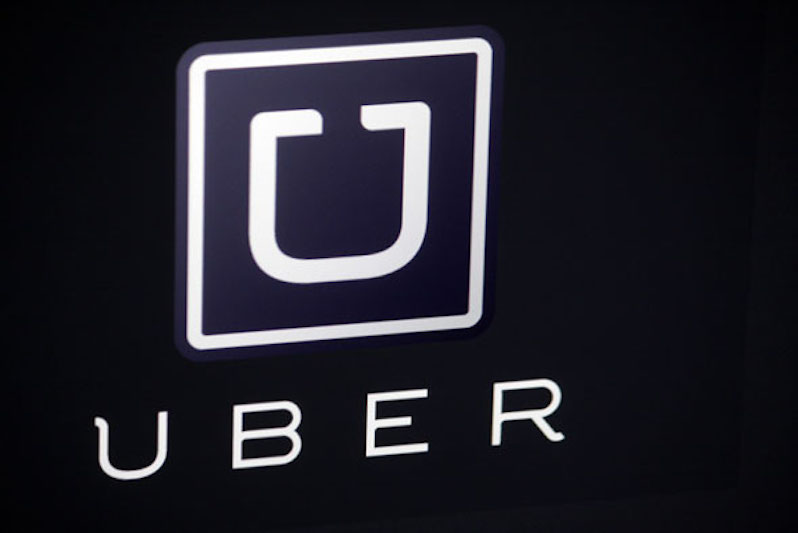As Uber Gets Ready to Turn Public, L.A. Drivers Prepare a Strike
After per-mile pay is slashed by 25 percent, a group seeks a livable wage, a cap on the company's commissions and a voice going forward. 360b / Shutterstock
360b / Shutterstock
As Uber prepares to go public on the New York Stock Exchange, many drivers in the Los Angeles area hope their colleagues will join them in a strike Monday.
Last week, Uber slashed per-mile pay from 80 cents to 60 cents in Los Angeles County and parts of Orange County. In response, the group Rideshare Drivers United is seeking a 25-hour strike against both Uber and Lyft.
The group, which now numbers nearly 3,000, has made a list of demands in what it calls “A Drivers’ Bill of Rights.” Their demands include a 10 percent commission cap for Uber and Lyft, a minimum wage per trip that corresponds to the one recently established in New York City, and a recognition of a driver-led organization that allows it to negotiate on the behalf of drivers without fear of retaliation.
In January, New York City enacted a $17.22 minimum wage (after expenses) for all rideshare drivers. The first such pay policy in the U.S. came after a report by the New York City Taxi and Limousine Commission found that almost 20 percent of all rideshare drivers receive food stamps, 40 percent receive Medicaid and 16 percent have no health insurance.
The demonstrators face significant obstacles in organizing, primarily due to the individual nature of the work since drivers only interact with apps and not each other. This has fueled concerns that drivers as well as passengers could end up completely unaware of the protest.
Bryan Menegus from Gizmodo reports:
Like other changes to the labor conditions of Uber’s core workforce—who are categorized as independent contractors and not employees—unilateral announcements are sent through alerts in the app or Terms of Service changes with little or no warning. According to Drivers United organizer and current Uber driver Esterphanie St. Juste, “essentially, if you don’t accept what they say, you’re fired.” With the illusion of consent, you can go from having a job to being unemployed, and you’re let go with all the dignity of a pop-up ad.
The 25 percent reduction has roiled drivers in the area who were already struggling to make a living wage. “No joke, 80 cents per mile [the approximate previous rate] is not enough either. And folks who’ve been on for a long time remember when it was more than a dollar per mile,” another Drivers United organizer, Nicole Moore, told Gizmodo. She describes the competitive environment between Uber, Lyft, and others as “a mad rush to the bottom,” one which mostly hurts drivers themselves—and points out that she knows several colleagues who sleep in their cars to make ends meet. She added, “I’m mad. I’m not gonna take it anymore. It’s not right.”
“Drivers told us that they value promotion opportunities, so we’re introducing a new Quest promotion feature, while also changing the per minute, per mile and minimum fare rates,” an Uber spokesperson told Gizmodo via email. “These changes will make rates comparable to where they were in September while giving drivers more control over how they earn by allowing them to build a model that fits their schedule best.”
Rob Mead, an Uber driver in Reno, Nevada, shared a story with The Guardian about how he made a measly $3.75 in an hour after expenses. Nicole Moore, who drove in the past for Uber and currently drives for Lyft, said “some days we’re lucky after expenses to make $8 an hour.”
Uber Technologies expects to publicly file for its offering on the New York Stock Exchange in April with a kickoff listing that could value the company at as much as $120 billion. Lyft will start trading this week on the Nasdaq. Going public potentially could be spurring the two companies to try to cut wages for their drivers in order to increase their revenue, a move that would most likely lead to a wider range of interest and investment in their stock.
Although Uber looks to kick off the strongest NYSE listing of the year, the company faces a host of problems.
Uber generated $11.4 billion in revenue in 2018 but the company still has been unable to show a profit since its inception. The firm lost $1.07 billion in three months ending September 2018. In 2018, it was only able to make 74 percent of its costs. The year before, it was roughly 64 percent. According to New York Magazine, that 10 percentage point increase came almost entirely by cutting driver pay.
Uber is also facing multiple lawsuits in the United Kingdom. These include a suit in which drivers are hoping to be acknowledged as employees and therefore entitled to rights such as paid holidays and a minimum wage. Another includes allegations against the company that it continues to break European data protection laws. In the latter case, four drivers allege Uber withholds GPS data that shows “dead mileage” they accrue on the job, which they say makes it impossible for them to accurately calculate their hourly wage.
Actual data on what Uber drivers make after expenses and fees varies according to different reports. A May 2018 report by the Economic Policy Institute found the median wage for Uber drivers in the U.S. after expenses and fees is $9.21 an hour. This puts them in roughly the 10th percentile of all wage and salary workers’ pay, meaning Uber drivers earn less than what 90 percent of other workers earn. And drivers who transport people (Uber or Lyft) or things (Uber Eats or Postmates) made 53 percent less in 2017 than in 2013, according to a study by the JP Morgan Chase Institute. It should be noted that this shift is also attributed to an increase in the number of drivers driving fewer hours.
There are currently an estimated 900,000 active Uber drivers in the U.S. and close to 3 million globally. As the company prepares itself to go on the stock market, many drivers remain skeptical they will reap any of the benefits and will be put on the wayside as Uber tries to look good for its potential investors. With the demonstration Monday and other actions, they hope they can at least begin to have their voices heard.
Your support matters…
Independent journalism is under threat and overshadowed by heavily funded mainstream media.
You can help level the playing field. Become a member.
Your tax-deductible contribution keeps us digging beneath the headlines to give you thought-provoking, investigative reporting and analysis that unearths what's really happening- without compromise.
Give today to support our courageous, independent journalists.






You need to be a supporter to comment.
There are currently no responses to this article.
Be the first to respond.